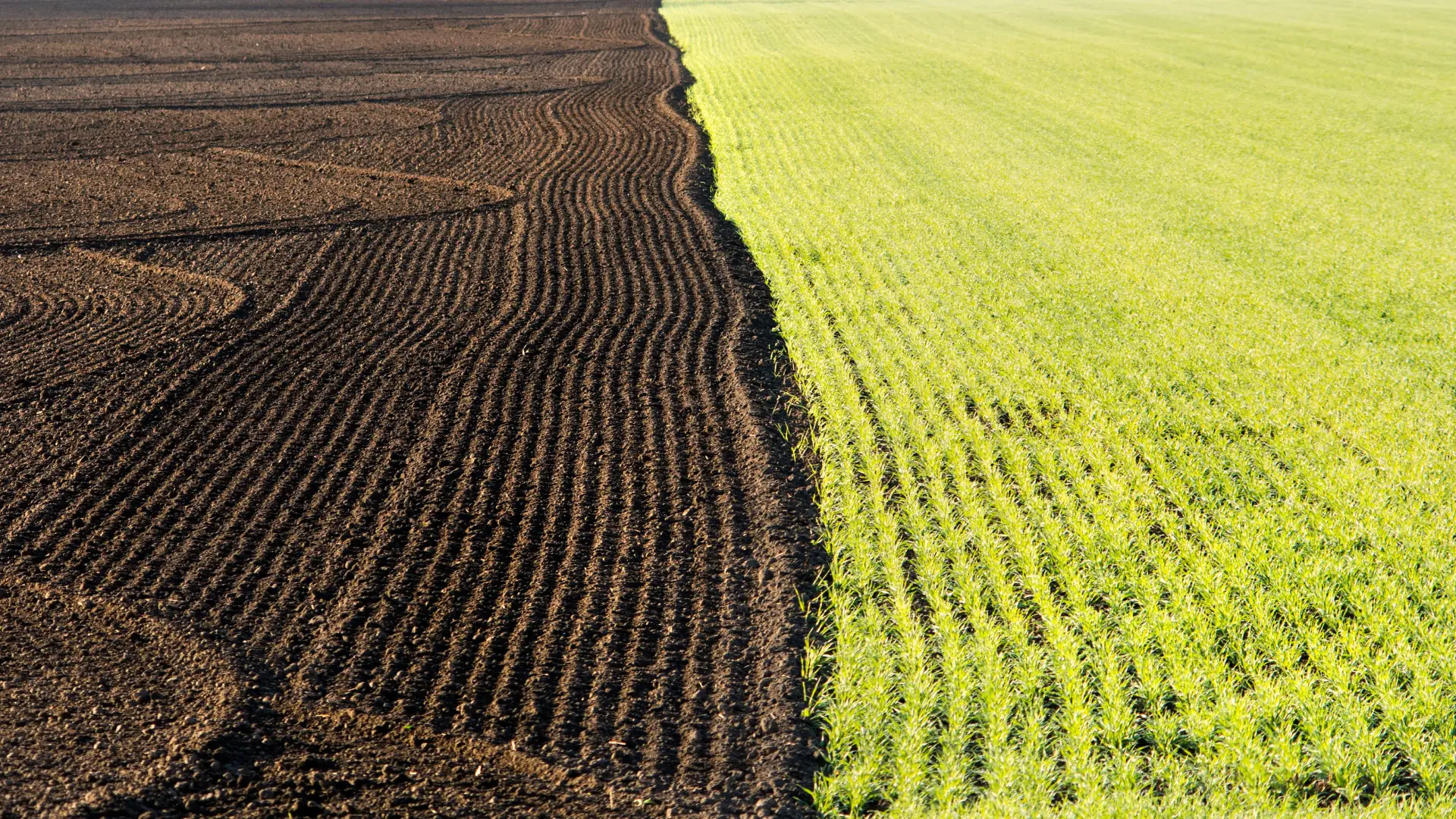The Financial Times recently published an article calling into question the climate benefits of soil carbon sequestration. The premise of the article is:
There is lively debate over how much carbon can actually be stored in soils, how long for and how effectively it can be measured.
There is no refuting the premise of the article. The logistics and impacts of soil carbon removals are complex. After all, managed soils are dynamic biological and chemical systems and while much has been learned about how these systems function, there is much to be learned. This is especially true of how soils may help mitigate climate change.
The article highlights the increased interest in companies across the food and agriculture sector in scaling regenerative agriculture programs as a means of mitigating climate change. Companies are investing millions of dollars in their supply chains to help cut GHG emissions and increase carbon removals in soil.
The science of soil carbon removal, like many innovative climate solutions, isn’t perfect. However, it’s important to note that this method does have potential.
Additionally, regenerative agriculture programs that emphasize soil carbon removals have many beneficial climate impacts, including improved soil health and increased crop resilience.
Criticisms of soil carbon sequestration, as described in the Financial Times:
Too few companies have set quantitative targets for soil carbon removals and many company programs are not compensating farmers for shifting to regenerative practices.
It is encouraging to see companies starting to create regenerative agriculture programs to help create a more resilient food system. However, of the 6,779 agriculture- and food-related organizations listed by Science Based Targets Initiative (SBTi), only 58% (3,928) of those organizations have set clearly-defined, science-based pathways to reduce GHG emissions. And of those, only 17% (658) have set targets at 1.5℃, in line with the Paris Agreement.
Let us be clear: all food and agriculture companies should set targets consistent with 1.5C and should be very transparent, quantitative, and granular with respect to soil carbon removal strategies against those targets.
Companies should also fairly and justly compensate their farmers for implementing regenerative ag practices and if carbon credits or other financial assets are generated from these programs, they should be shared with the farmers. A company’s climate commitments should not be made on the backs and bank accounts of their farmers.
Luckily, the industry is exploring and implementing solutions for this. Companies across the agrifood value chain are incentivizing farmers for their carbon outcomes, or paying them upfront for regenerative practice adoption. These programs aren’t perfect yet, but they’re beginning to offer fair ways for farmers to diversify their profits through carbon farming programs. One significant accelerator for farmer payments has been the use of more accurate, dynamic data to estimate soil carbon sequestration. This data increases the value of soil carbon outcomes and can help businesses build a case for farmer payments.
Soil carbon sequestration capacity has been widely overestimated.
We know that soil can be an important sink for carbon sequestration. We also know that soils rich in organic matter (carbon) are highly productive and resilient to the impacts of climate change. Because of the relative ease of implementing practices that help to increase soil carbon sequestration, many advocates have hyped the potential of soil carbon removal as a climate solution, often with little rigorous data to support those claims.
Making matters worse, these dubious claims are then used to generate wildly optimistic estimates about the financial windfall from soil carbon programs. The resulting skepticism about soil carbon sequestration creates a significant barrier to scaling regenerative agriculture with its known benefits of improving soil health and improving ag resilience.
We would do well to remember the adage ‘extraordinary claims require extraordinary evidence,’ lest we ruin our own credibility. However, rather than move us away from soil carbon sequestration, this knowledge should encourage us to deepen our understanding of soil carbon sequestration and expand our ability to measure sequestration capacity. The ‘side effects’ of carbon farming programs are highly productive soils and resilient crops, so it’s important to continue implementing these programs while we enhance our science and carbon quantification methods.
Soil carbon quantification is difficult to estimate accurately.
As mentioned above, soil is a complex, dynamic biological system. This makes soil carbon quantification inherently difficult. A single farm field may contain many different soil types, each with their own carbon-holding capacity. The “solution” is a complex soil stratification scheme and numerous samples to be analyzed in a laboratory resulting in high costs and a level of uncertainty in the estimated soil carbon content that must be taken into account.
One solution to the direct measurement of soil carbon is the biogeochemical modeling to estimate soil carbon. Several of these models exist (like Regrow’s DNDC) with varying levels of input data required to generate soil carbon removal estimates. Don’t get us wrong: collecting all of the input data needed to run the models is difficult, and can impact the accuracy of the estimated outcomes. However, advances in farm management systems, cloud computing capabilities, and remote sensing technologies have made data collection increasingly reliable and less burdensome for farmers.
Additionally, recent advances have allowed for the quantification of model uncertainties, which gives markets and accounting systems the ability to adequately discount soil carbon removals in keeping with the principles of conservativeness in GHG accounting.
The biggest benefit of biogeochemical models is the ability to scale soil carbon removals and GHG reductions at much lower cost compared to direct measurements. This allows us to accelerate our rate of change and implement carbon sequestration programs at scale — something we desperately need to meet our 1.5C climate target.
Combining soil measurements with soil modeling in a hybrid approach allows for measurements to be used to calibrate and validate models thereby bringing more confidence in the model outputs. In addition, measurements can be used after varying project intervals to help “true up” model outcomes and account for discrepancies for reporting and crediting soil carbon removals.
All three of these approaches, measurement, modeling, and hybrid methodology, are allowable for GHG accounting under the current draft of the Greenhouse Gas Protocol Land Sector Removals Guidance. And with all three of these approaches, we can scale action and accelerate climate mitigation.
Soil carbon sequestration is impermanent.
The dynamic nature of soils makes soil carbon removals impermanent— this is true. If we are to limit warming to 1.5C, then carbon removals need to satisfy the requirement of permanence (often for carbon removals, permanence is defined as 100-1000 years). This time requirement is unrealistic for soil carbon.
The question then becomes, what is the role of soil carbon removals in climate mitigation? It is not unreasonable to expect that carbon sequestered due to regenerative ag practices remain in the soil as long as those practices are continued. In fact, permanence monitoring is a requirement for carbon removals under the draft of the GHG Protocol Land Sector Removals Guidance. So perhaps, if we consider regenerative ag practices to be a long-term solution and implement them as such, we can keep sequestered carbon in the soil while reducing emissions for future food production. Soil carbon sequestration could be a ‘yes, and’ solution in which we remove carbon from the air today, keep as much of it in the ground as possible, and reduce emissions from food production tomorrow.
As stated in the article, soils do not have an infinite capacity to store carbon. Perhaps the role of soil carbon sequestration is to serve as a bridge technology until more permanent direct air capture and storage technologies become more scalable, reliable, and cost effective… and while we increase adoption for low-impact farming.
There is too much focus on soil carbon.
“There is too much focus on soil carbon as a financial asset.” This often distracts from the environmental outcomes at the expense of maximizing the financial benefits.
While we need financial support to scale climate action, having a siloed focus on the financial benefits often exacerbates the difficulties in soil carbon sequestration, because the outcomes aren’t as clean or ‘high-value’ as we’d like.
However, it’s important to remember that soil carbon sequestration is ultimately intended to heal our planet and build more resilient food systems. Financial incentives are a useful enabler, but we cannot limit our focus to finance. If we are to build a resilient food system, soil carbon sequestration is going to be a critical tool in providing the co-benefits that enable resiliency.
In short: soil carbon is messy, but that does not mean we should not do it. We should do all we can to mitigate climate change today, while continuing to advance our science and technology in service of tomorrow.
Learn more about soil carbon removals and estimation, and see why it’s important to invest in it.




